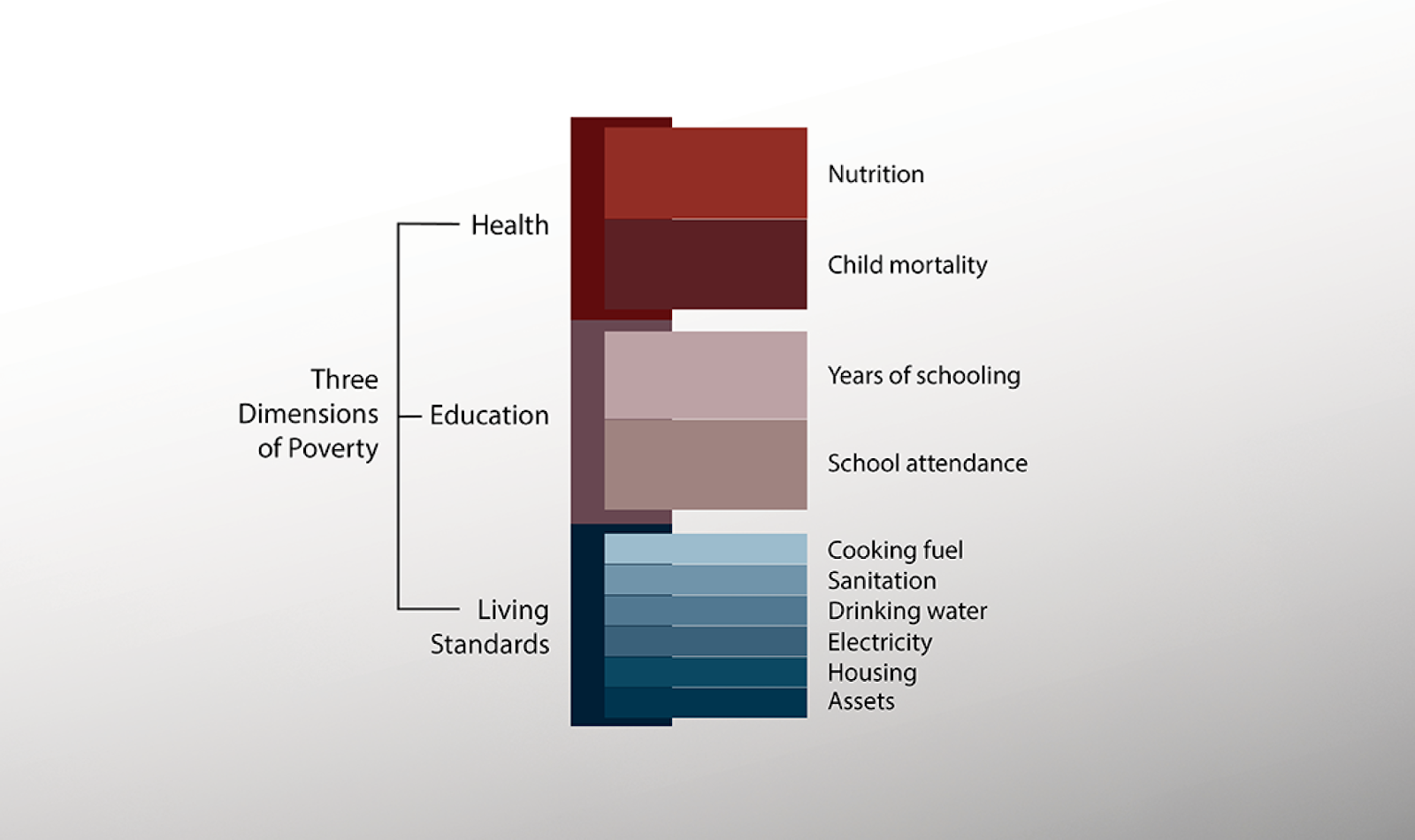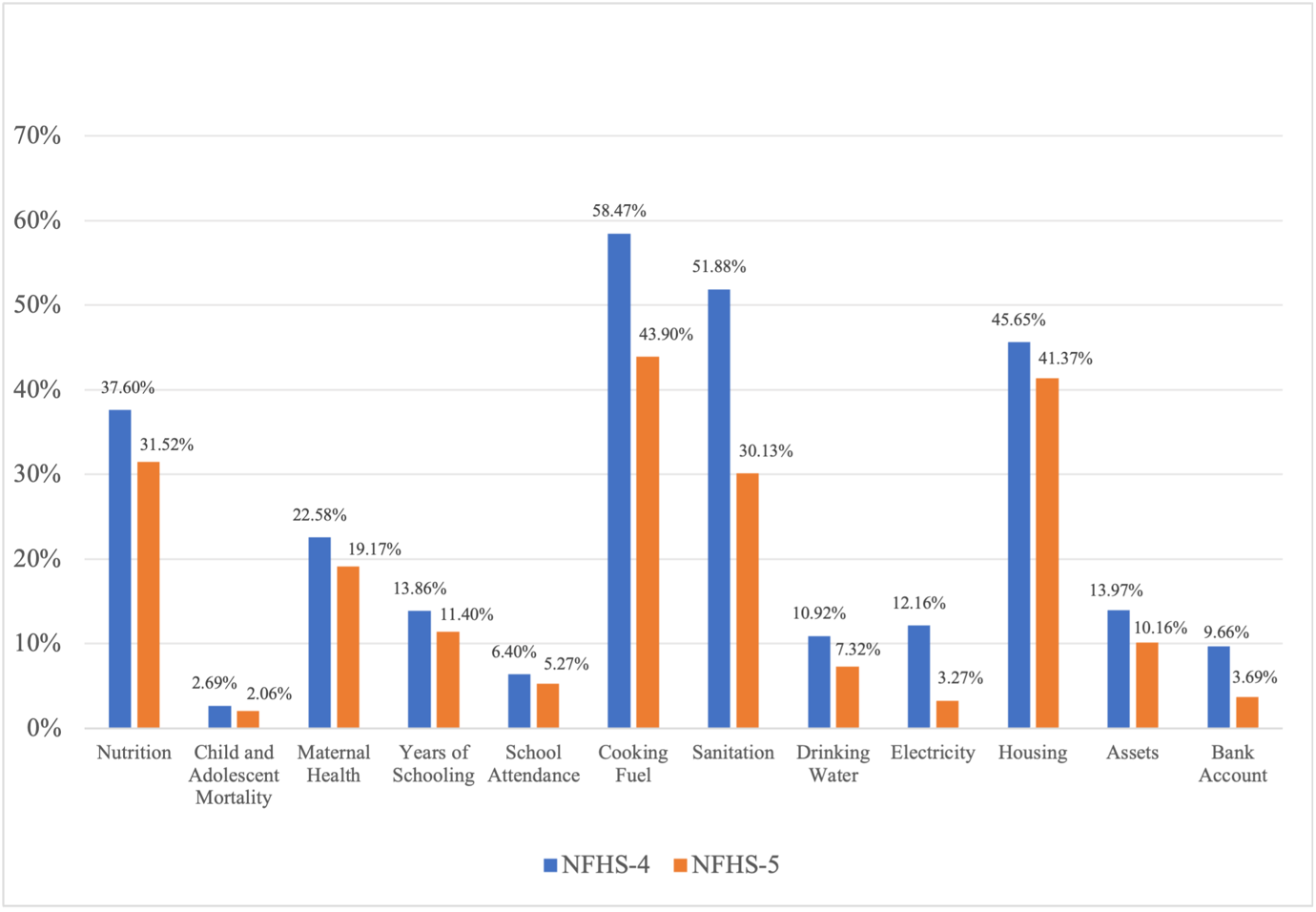Font size:
Print
Multidimensional Indices in Indian Healthcare
Reforming Social Protection with Multidimensional Indices
Context: India’s poverty measurement has evolved from pre-independence subsistence-based estimates to modern multidimensional frameworks. This shift recognises poverty as a complex interplay of deprivations across health, education, and living standards, not just income.

What Is the Multidimensional Poverty Index (MPI) and Why Was It Introduced?
- The Multidimensional Poverty Index is a global measure that captures acute poverty by assessing multiple deprivations people face in their daily lives—beyond just income.
- Developed in 2010 by the Oxford Poverty and Human Development Initiative (OPHI) and the United Nations Development Programme (UNDP).
- In 2021, Niti Aayog introduced the Multidimensional Poverty Index (MPI) for India, marking a pivotal step in measuring and addressing poverty.
- The MPI, based on the Alkire-Foster methodology, captures both the incidence (how many are poor) and intensity (how poor they are) of multidimensional poverty.
- India’s MPI utilises 12 weighted indicators, carefully selected to align with national development priorities. Households are categorised according to their cumulative deprivation scores, providing a nuanced picture of poverty. These indicators provide insight into both the incidence and intensity of poverty.

Progress and Disparities in Poverty Reduction
- A comparison between data from NFHS 2015-16 and NFHS 2019-21 shows a significant reduction in multidimensional poverty—from 24.85% to 14.96%—with approximately 135 million people moving out of poverty.
- This progress is credited to the granular, region-specific insights generated by the MPI, which have informed targeted interventions under schemes such as: State Support Mission initiative, Pradhan Mantri Awas Yojana, National Food Security Act (NFSA), Jal Jeevan Mission, and Swachh Bharat Mission.
- However, this progress has been uneven. While indicators related to standards of living saw reductions of 15–25 percentage points, health-related deprivations declined only by 0.6–6 percentage points, revealing systemic gaps in healthcare-related targeting and coverage.
Why Is Healthcare Targeting Still Inadequate?
- Despite the demonstrated value of MPI in addressing overlapping deprivations, its potential remains underexploited in healthcare policy. Current schemes such as AB-PMJAY and the NFSA 2013, rely on outdated data from the Socio-Economic Caste Census 2011, which uses broad income proxies.
- This results in inadequate targeting and exclusion of deserving households—for example, a household owning a motor vehicle might be ineligible for health benefits despite suffering from severe health-related deprivation.
- Moreover, the MPI does not fully capture the intensity of poverty or the dynamic nature of vulnerabilities, which limits its effectiveness in designing responsive health policies. A government audit highlighted that beneficiary identification lacked scientific rigour, further compounding exclusion issues.
How Can MPI and MVI Be Integrated into Healthcare Schemes Like AB-PMJAY?
- Integrating MPI and MVI into schemes like AB-PMJAY can improve effectiveness.
- Currently, AB-PMJAY covers INR 5,00,000 per family for hospitalisation for the bottom 40% and individuals aged over 70.
- However, it lacks coverage for outpatient care, a significant source of financial stress for vulnerable families. Despite a reduction in out-of-pocket healthcare spending (from 62.6% to 39.4%), 32–39 million people are still pushed into poverty annually due to catastrophic health expenses.
- By applying sliding scale mechanisms based on vulnerability intensity, MPI and MVI can ensure equitable resource distribution. India already uses similar tools under the Aspirational Districts Programme and could extend this approach to all national health initiatives.
What Is the Way Forward for India’s Poverty and Health Policy?
- Budget Allocation: Multidimensional indices also have the potential to optimise budget allocation and improve institutional coordination. Costa Rica accelerated poverty reduction in 2017 without increasing spending by aligning MPI data with specific ministerial programmes, enhancing coordination and efficiency.
- Inter-Ministerial Coordination: India can adopt a similar “whole-of-government” approach, drawing inspiration from Panama’s Social Cabinet, where inter-ministerial collaboration was led by the president. Such a mechanism would enhance cooperation across ministries dealing with health, nutrition, sanitation, education, and social protection, all of which affect health outcomes.


